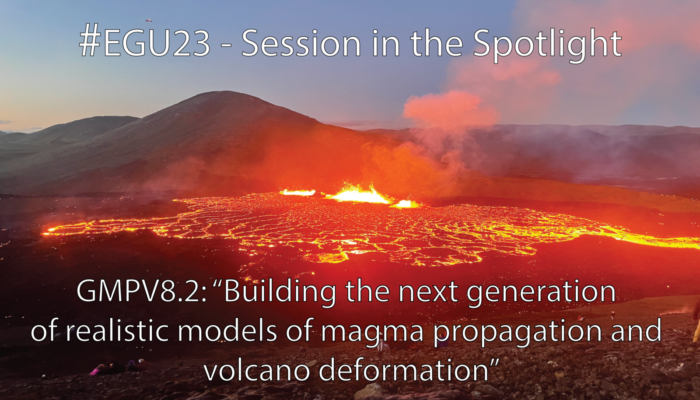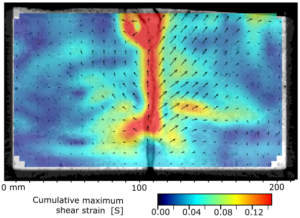
The abstract submission for the General Assembly in 2023 is open now until 10. January 2023! The #EGU23 is set to again become a forum for innovation and debate about the latest progress in the geosciences, with a mixture of broader and more focused sessions. Today, we highlight one of those targeted sessions GMPV8.2 which aims to spark debate at the edge of the push in the GMPV community towards “Building the next generation of realistic models of magma propagation and volcano deformation”, which is convened by Sam Poppe, Claire Harnett, and Tim Davis. The conveners say:
Once we pick up seismic and geodetic signals at an active volcano indicating that magma is on the move, the game begins. How deep is the magma? How much volume is being mobilized? What is the geometry of the intrusion (i.e. is it a dyke or a sill?)? Where is the magma going? In which direction is it traveling? Will it stall or will it go on to erupt at the surface? If so, where?
These are the questions we attempt to answer with analytic and numerical models. Our modelling efforts fall apart into two broad categories. Inversion modelling attempts to use geodetic data to estimate the characteristics of the propagating magma intrusion (depth, sheet opening, height, width, strike, dip, location). On the other hand, forward numerical models attempt to understand the effects of the many physical factors on the magma propagation dynamics, to aid the interpretation of volcano monitoring data indirectly.
Laboratory experiments can help calibrating and validating numerical models, but for that quantitative results have to be collected. Such quantifications include this cumulative maximum shear strain pattern measured in X-ray Computed Tomography imagery of an analogue golden syrup dyke intrusion in sand-and-plaster granular material (from Poppe et al. 2019, Frontiers in Earth Science)
Over the past decades, inversion models have largely stuck with a set of assumptions that drastically simplify the propagation mechanisms: intrusions themselves have been mostly treated as static, simple geometric bodies with a uniform overpressure, and the rocks that make up the shallow crust and volcanoes have been approached as homogeneous, linearly elastic media. More and more, detailed geological observations at exposed Volcanic and Igneous Plumbing Systems, or “VIPS”, highly quantitative laboratory experiments (see inset figure), and the proliferation of ever-denser volcano monitoring networks at a growing number of active volcanoes, have captured complexities of magma propagation that go far beyond those simplifications. The inaccuracies of now-standard geodetic inversions, on which eruption forecasts are increasingly based, are becoming more obvious.
Many researchers in the GMPV community are working hard to move models of magma propagation and volcano deformation beyond the standard model assumptions, quantifying inaccuracies in geodetic inversions and convert the known complexities into new, more realistic numerical models of how magma moves through the crust. In this session, we invite everyone to present their latest results on their efforts in this direction. We hope to instigate an inspiring debate over which directions we think we should take next as a community to build the next generation of realistic and powerful models of magma propagation, which will yield increasingly useful eruption forecasts and studies of the long-term behaviour of volcano plumbing systems!
If you want to submit your abstract now to this great session, you can do so here 👈👈
This #EGU23 session is organized in parallel with the #IUGG23 session IAVCEI V12 “Toward Realistic Modelling of Volcano Deformation” convened by Tim Davis, Claire Harnett, Delphine Smittarello, and Sam Poppe.

